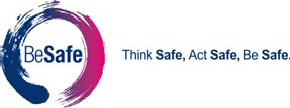Title Page
-
Conducted on
-
Prepared by
-
Location
Policy 4304
-
1. All bus routes are route risk assessed and include low bridges within 3 miles of the route.
-
2.All engineering test routes are risk assessed and include low bridges
-
3. All low bridges for the operating area are identified and displayed on a map.
-
4. Maps (3) are issued to all drivers, engineering driving and any contractors who might drive first buses on the highway.
-
5. Training school issue above maps to all new starters who will be driving.
-
6. All new starters receive bridge awareness training as part of their induction training.
-
7. All existing staff who drive buses receive the new bridge awareness and technology toolbox talk.
-
8.All Operations and Engineering Managers and Supervisors have received a briefing on bridge risk management.
-
9. All training school staff, schedulers and incident investigation staff have received a briefing on bridge risk management.
-
10. All staff detailed in section 2 of the policy have signed for receipt of the policy (4304) and understand their role and responsibility.
-
11. The Engineering Manager is certain the vehicle dimensions for his/her fleet is accurate against the fleet list
-
12. The engineering manager is certain all his/her fleet have a cab height sticker fitted.
-
13. Drivers carry out first user checks to confirm the vehicle fleet number displayed on Ticketer is accurate. (To the cab sign)
-
14. All above mentioned staff are aware of the diversion policy 4303 “MUST STOP”.
-
15. All depots will provide route descriptions and route risk assessments to drivers which detail low bridge risk.
-
16.Route training will be carried out in compliance with SOP 45 and 55.
-
17. All of the First Bus fleet of single and double decker buses will be fitted with a Ticketer machine, and do not leave site without.
-
18. The depot/OpCo has a low bridge champion who is competent in the geofencing of bridges on both the Ticketer and Green Rd systems.
-
19. Any Ticket machine defects are reported and remedied as soon as is reasonably possible the same shift.
-
20. Faulty ticket machines will be reported on TracerIT immediately.
-
21. Replace ticket machines MUST have the correct fleet number entered when setting it up. IMPORTANT.
-
22. When a vehicle moves between depot or is part of a planned vehicle movement cascade, engineering SOP 2803 is adhered to.
-
23. The Operations Manager has ensured “No Go” bridges have been identified, communicated to all staff on the maps, route risk assessments and driver information.
-
22. All “No Go” bridges are geo fenced on green rd.
-
23. A recipient and deputy email will be provided by the OpCo for Green rd to notify of breaches.
-
24. Any breaches, near miss or bridge strike will be dealt with formally using the Cat 1 process for investigation and the formal disciplinary procedures followed.
-
25. All bridge strikes and “No Go bridge” breaches will be notified using the incident notification procedures.
-
26. Investigations will be conducted in line with appendices 2 of policy 4303.
-
27. Daily audits of the ticket machines will be carried out by operational. (See Ticketer procedure documents)
-
28. Central engineering will conduct monthly audits of the back office data for vehicle fleet numbers and dimensions.
-
29. Training managers will conduct periodic quality assurance checks of the bridge awareness training delivery.
-
30. the HSE BP audits compliance with this policy as part of the annual safety audit at sample depots in the OpCo.
Observations
-
Use this section to share any general observations or issues.
-
Use this section to add any relevant images.










![Fire Wardens Monthly Fire Inspection [P13] Fire Wardens Monthly Fire Inspection [P13]](/media/e5015ee3-678a-43da-b897-b95fe5e7b479)


